
The invention of the battery with Alessandro Volta and Luigi Galvani
- Subject:
- Electrical engineering
- Engineering
- Physical Science
- Physics
- Material Type:
- Lesson
- Provider:
- Khan Academy
- Author:
- Khan Academy
- Date Added:
- 09/22/2013

The invention of the battery with Alessandro Volta and Luigi Galvani
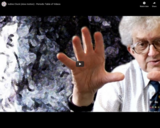
See the famous Iodine Clock reaction filmed with a high-speed camera. Explained by Professor Martyn Poliakoff. Also featuring Dr Samantha Tang.

Make sure you have Iodine in your diet, or you may get "Derbyshire Neck". This video is one of the 118 clips included in the periodic table of elements themed collection created by Brady Haran and the University of Nottingham in the UK.

In this video Paul Andersen explains how ionic solids form when cations and anions are attracted. When atoms lose or gain electrons they form ions. The strength of the attraction between ions is based on the amount of charge and the distance between the ions.

In this video Paul Andersen explains how ionic solids form a lattice between cations and anions. According the Coulomb's Law the lattice energy increases as the ions carry a larger charge and are smaller. Some of the properties of ionic solids are high melting point, low vapor pressure, brittleness and the inability to conduct electricity.
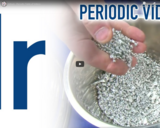
Iridium is element number 77 on the periodic table. This video is one of the 118 clips included in the periodic table of elements themed collection created by Brady Haran and the University of Nottingham in the UK.

Iron and thermite. We have uploaded this video again higher resolution because the previous version was quite low quality. This video is one of the 118 clips included in the periodic table of elements themed collection created by Brady Haran and the University of Nottingham in the UK.

The course will discuss the objectives and functions of water management systems for irrigation and drainage purposes. Analysing system requirements in terms of technical engineering constraints, management possibilities and water users (wishes and options) is central. This includes the design and operation of regulation structures, dams, reservoirs, weirs and conveyance systems; balancing water supply and water requirements in time and space is a main focus of analysis too.

The video "Is Reality Real? The Simulation Argument" is a resource included in the Physics topic made available from the Kurzgesagt open educational resource series.

In the wake of a hurricane and beset by an economic recession, the University of Texas Medical Branch on Galveston Island rebuilt for future resilience.

This "Isocitrate Dehydrogenase" learning object is the from the Sumanas resource series. Sumanas offers a robust selection of content and services that are directed at enhancing the learning experience.

Students investigate potential energy held within springs (elastic potential energy) as part of the Research and Revise step. Class begins with a video of spring shoes or bungee jumping. Then students move on into notes and problems as a group. A few questions are given as homework. The Test Your Mettle section concludes. The lesson includes a dry lab that involves pogo sticks to solidify the concepts of spring potential energy, kinetic energy and gravitational energy, as well as conservation of energy.

Residents of North Slope Borough, Alaska, look to solar-powered ice cellars and other strategies to preserve their traditional whaling lifestyle.

With valuable cultural and dietary assets at risk from sea level rise, this Pacific Northwest Tribe developed a plan to identify community adaptation priorities and concerns, and charted a course of action to address them.
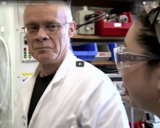
We put a series of jelly babies through a fiery ordeal in the interests of science?
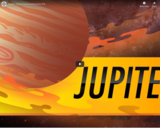
The video resource "Jupiter: Crash Course Astronomy #16" is included in the "Astronomy" course from the resources series of "Crash Course". Crash Course is a educational video series from John and Hank Green.

The video resource "Jupiter's Moons: Crash Course Astronomy #17" is included in the "Astronomy" course from the resources series of "Crash Course". Crash Course is a educational video series from John and Hank Green.

This lesson introduces students to three of the six simple machines used by many engineers. These machines include the inclined plane, the wedge and the screw. In general, engineers use the inclined plane to lift heavy loads, the wedge to cut materials apart, and the screw to convert rotational motion into linear movement. Furthermore, the mechanical advantage describes how easily each machine can do work and is determined by its physical dimensions.

Working through a calculation for K-Ar dating (good to have some prior experience with e and logarithms)
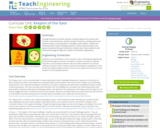
Through two lessons and five activities, students explore the structure and function of cell membranes. Specific transport functions, including active and passive transport, are presented. In the legacy cycle tradition, students are motivated with a Grand Challenge question. As they study the ingress and egress of particles through membranes, students learn about quantum dots and biotechnology through the concept of intracellular engineering.